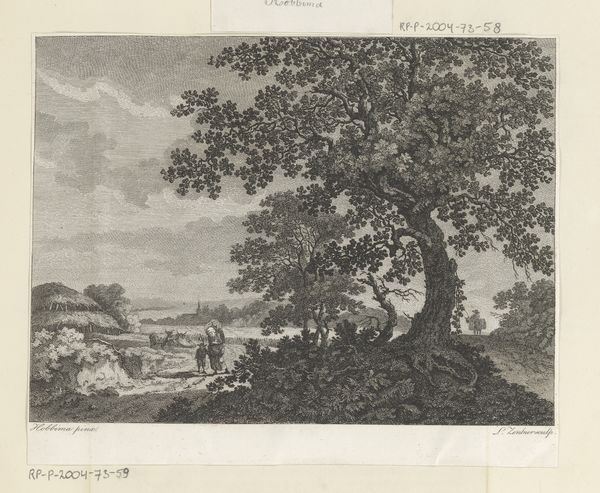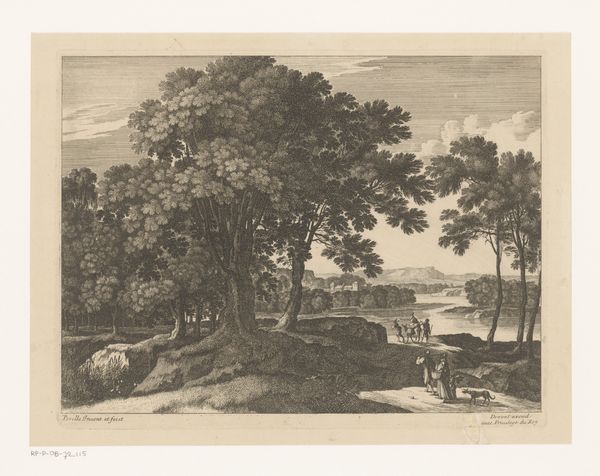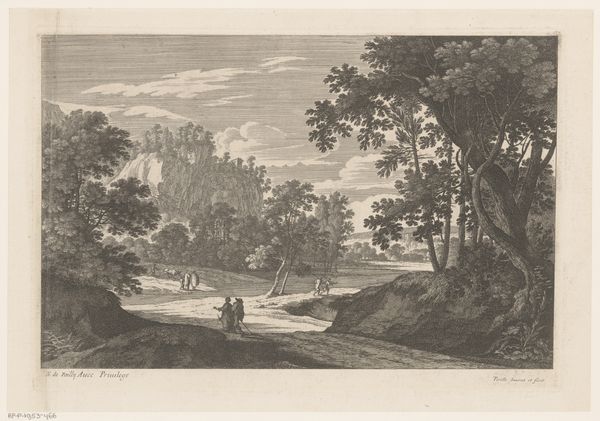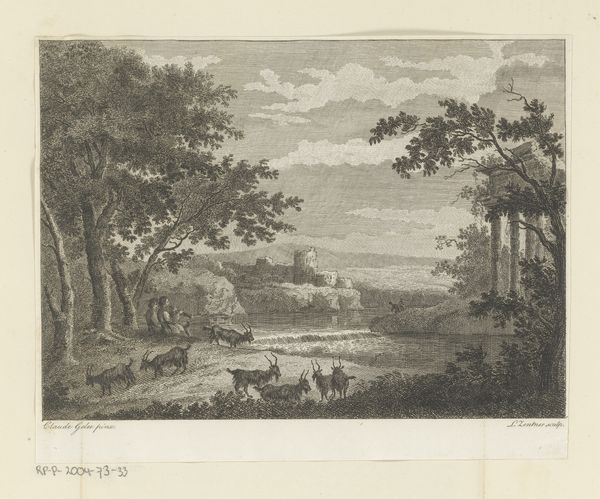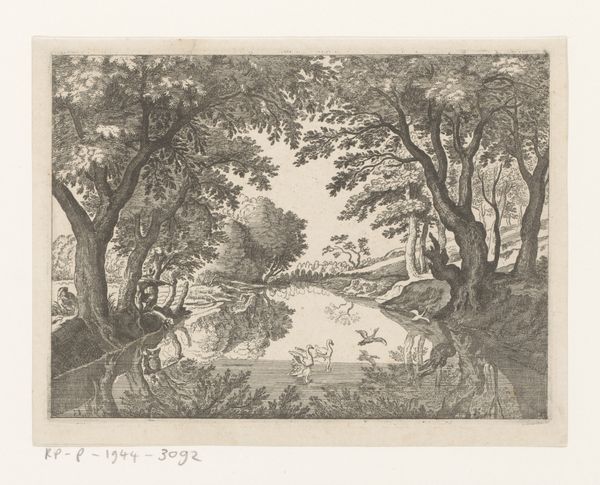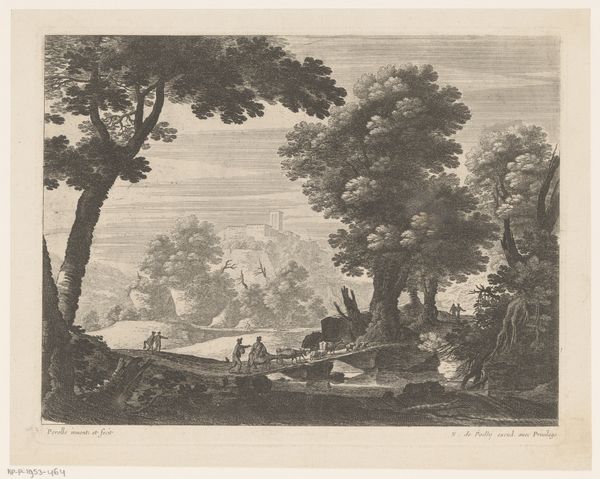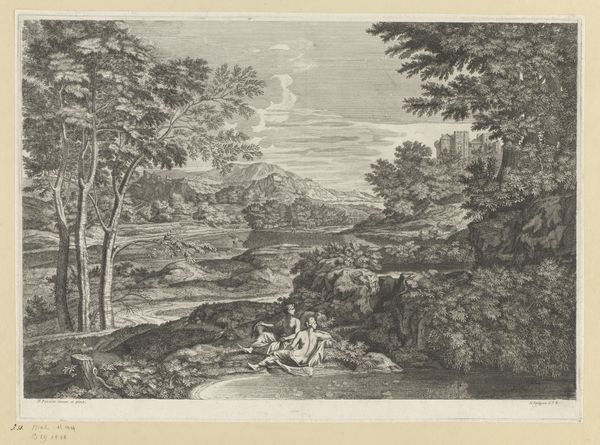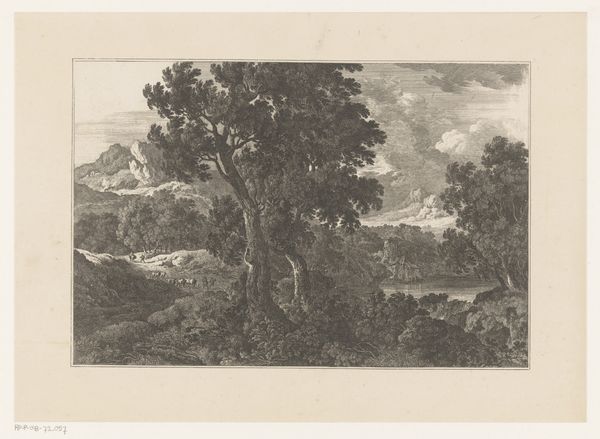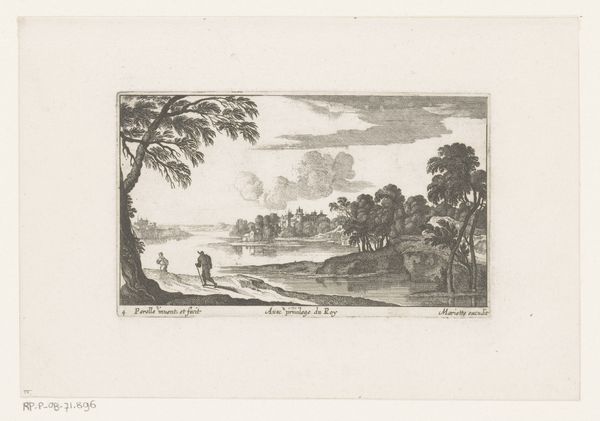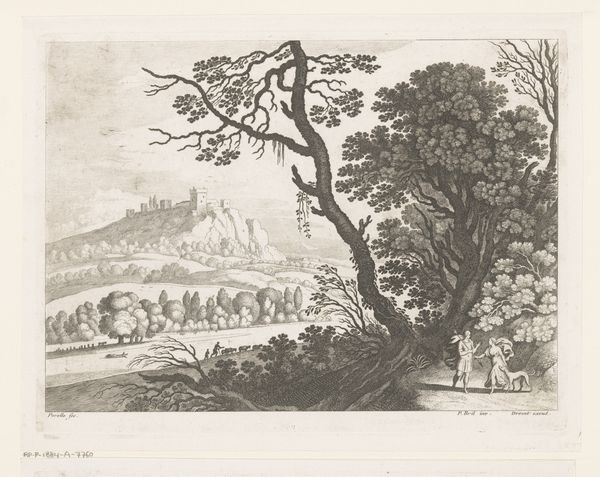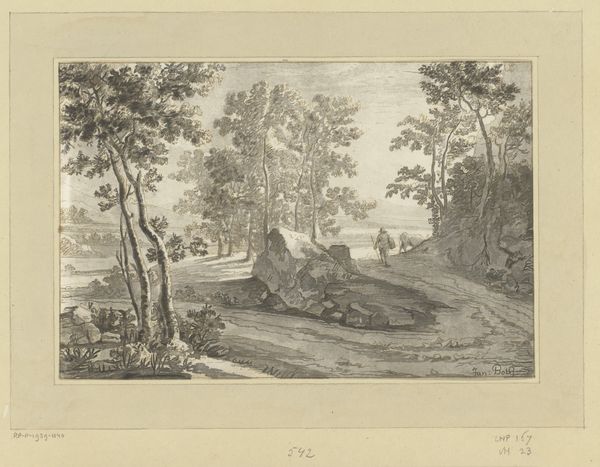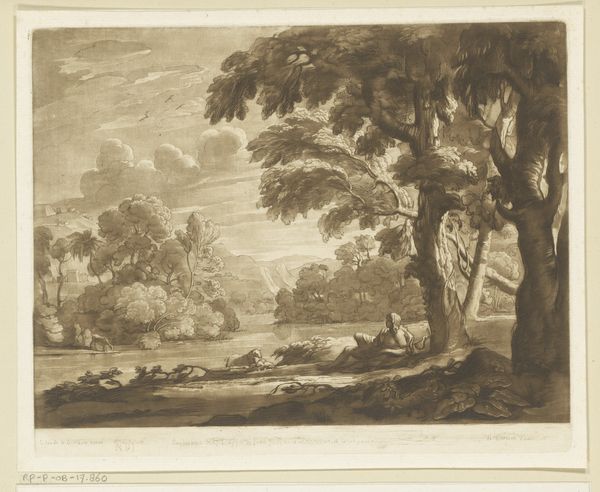
engraving
#
baroque
#
dutch-golden-age
#
landscape
#
engraving
Dimensions: height 137 mm, width 168 mm
Copyright: Rijks Museum: Open Domain
Curator: Look at this delicate Dutch Golden Age engraving: Matthäus Merian’s "River Landscape near Basel" from 1625. It’s currently held here at the Rijksmuseum. Editor: My first thought is a sense of quiet industry, doesn't it seem so carefully ordered? There's someone leading a cart near a wooded area, the landscape opens up gently…It’s detailed but somehow feels incredibly tranquil, too. Curator: Tranquil, perhaps deceptive tranquility! Basel in 1625 was deeply implicated in religious and political conflicts. The Dutch Golden Age thrived partially because of specific social and economic conditions linked to colonial power structures, no matter how charming the scenery might seem. The little figures are surrounded by potentially hostile environments. Editor: Absolutely, the context adds layers. However, I see how Merian has carefully composed the artwork, using dense foliage as a border between that feeling of serenity you observed, and possible dangers within the depths. Light and shadow give dramatic form to otherwise unassuming trees. Even in the middle of chaos, perhaps? Curator: It might indeed hint to strategies of withdrawal, as landscapes often provided in periods of intense social turmoil and colonial anxieties. The fleeing figure, could be a search for that space where they can live in peace, within an untouched territory. Editor: It feels so far removed from the artist’s experience—someone born in Basel but active in Frankfurt. Makes me wonder what memories, or imagined scenes, inspired him? Perhaps a yearning for stability during his journeys through Europe at that moment. Curator: Or maybe he sought to find places, beyond conflict or danger. What better way than crafting them himself through art? With one eye on the potential threats, as we talked about. The Baroque flair here, that almost exaggerated attention to detail, also draws attention to themes beyond purely aesthetic representation. Editor: Very true. It is like every little detail, including all its apparent flaws and defects, are not randomly positioned but are part of a more complex narrative, don't you think? And again, the trees at the side guide you and become more important to create an impact in how you watch this art. Curator: The dialogue between man and environment is central. By creating an art as small as this, a meditation that encourages to slow down for some minutes, perhaps in an urgent time. This artwork reminds me of what a complex situation every artist lives when creating! Editor: It has been interesting to contextualize the potential historical situation for this "River Landscape". Art is never an isolated creation but one way for artists to feel less insecure about their present and uncertain about their future.
Comments
No comments
Be the first to comment and join the conversation on the ultimate creative platform.
